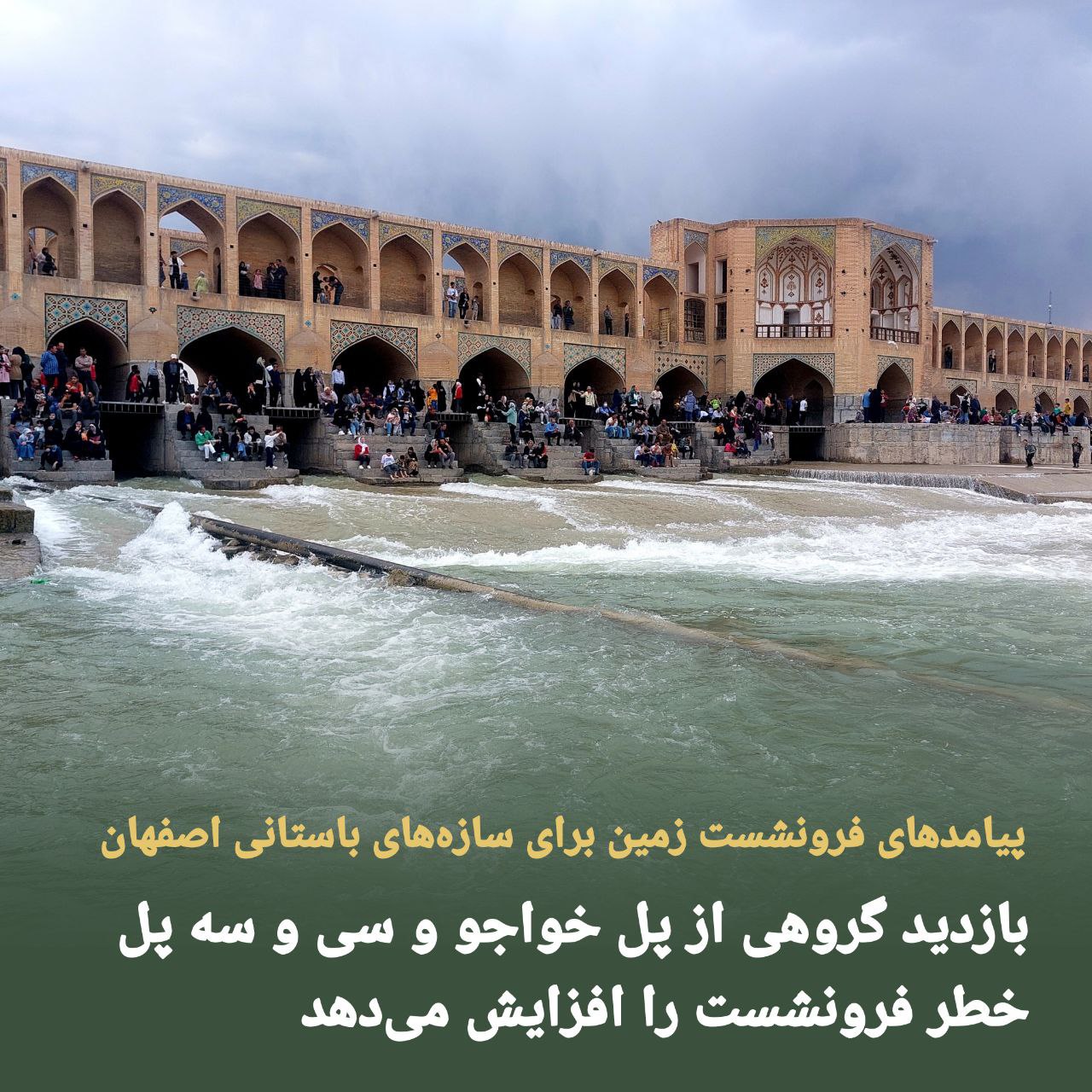‼ according to the heritage report; A review of meteorological data shows that the amount of precipitation in Zayandeh Rood basin has decreased by more than 18% in the last 50 years. On the other hand, the water consumption of Zayandeh Rood has increased sharply in the last few decades and shows a 7-fold increase in the last 30 years.
According to Qadri, with the increase in air temperature, the water in the openings of the river bed evaporates and is separated from the alluvial sediments. The openings of the alluvial bed and the lower part are depleted of water over time and the pressure of the upper layers compresses them. The compression of the openings and the pressure caused by the weight of the upper layer reduces the volume of the lower layer and provides the ground for subsidence of the land in the river bed and surrounding lands.
He believes that there are thirty-three bridges and Khajo bridges that were built on this river and in the middle of Isfahan city; More than the ancient buildings in the city, it is facing the risk of periodic decrease in rainfall and lack of water. The foundation and building of these bridges are made in a way that is very stable against water and humidity; But the dryness of the river bed makes it unstable over time and in the long term and increases the possibility of subsidence.
This land-archaeologist says: The bed of these bridges and the surrounding land has been the main route of river water since the past, and its alluvial holes and underground basins have been filled with water. A sharp decrease in the flow of the river, or the absence of water for several consecutive months, increases the risk of subsidence for these historical bridges and increases the possibility of damage to this valuable ancient structure.
This university professor emphasizes: paying attention to climate changes and decreasing rainfall, lack of surface and underground water resources, increasing urban and agricultural water consumption, expanding various industries and transferring water from this river to neighboring provinces; The need to manage water resources is felt more in Isfahan province, the Zayandeh Rood river basin and the area of bridges and other historical monuments.
Qadri believes that this management should, at the same time as providing water for the various needs of the people of the province and providing optimal patterns for its consumption, should consider the consequences of water shortage and possible subsidence for the ancient buildings of the city of Isfahan, such as the thirty-three bridges, Khajo Bridge, Forty Seton, Ali Qapu, Abbasi Mosque, Seyyed Mosque and . Anticipate and examine ways to face this natural event.
Referring to the aesthetic and symbolic status of Isfahan’s historical monuments, especially the thirty-three bridges and the Khajo bridge, he believes that historical bridges face the risk of land subsidence. Therefore, comprehensive environmental management is needed. Therefore, apart from regulating river water in management, it is necessary; Check the sustainability threshold of the bridge building for tourism as well.
He warns: any group visit to the bridges should be done in harmony with the stability of the bridge building and the hydrological conditions of the river bed. In the hot season of the year, when the water in the river decreases, or dries up in general; Group and intensive visit to the building of bridges increases the risk of subsidence for it.
https://is.gd/02pCI1
instagram.com/miras_bashi
@mirasbashi
This post is written by maryamatyabi
